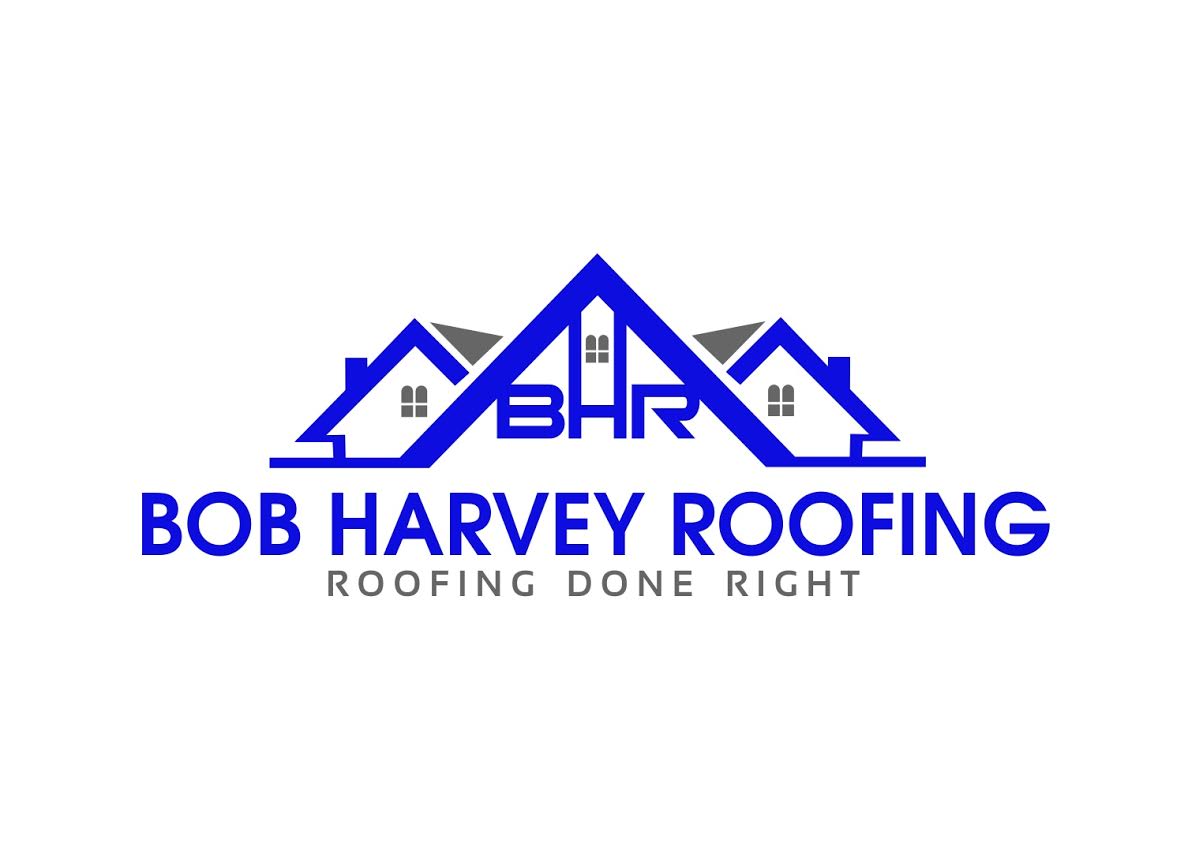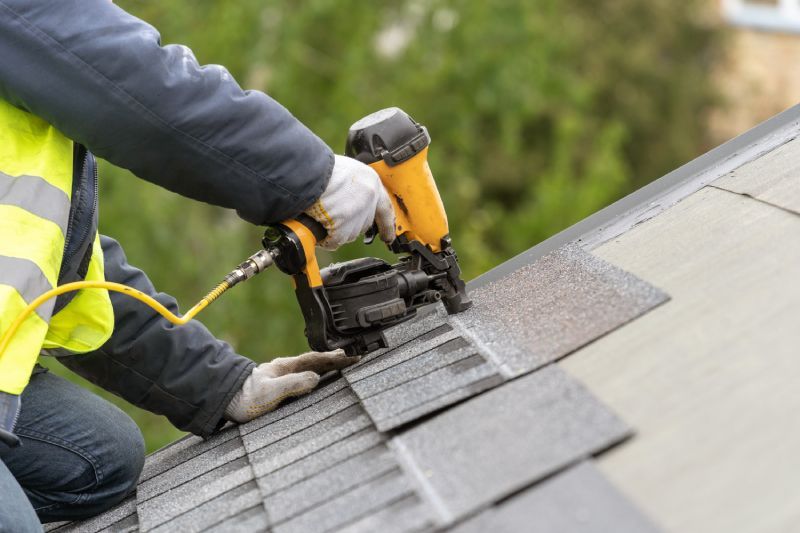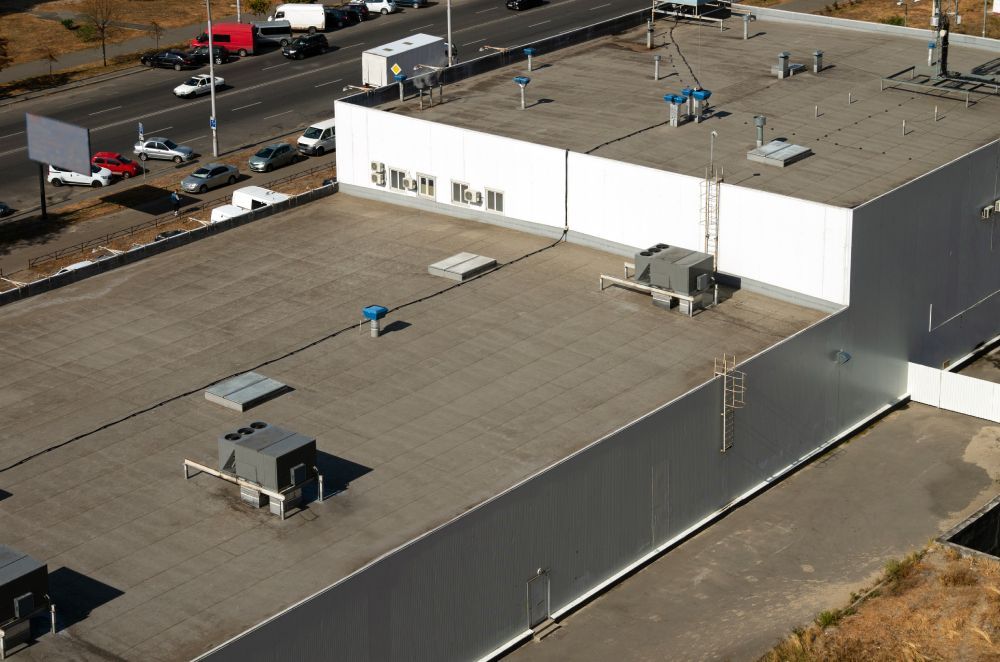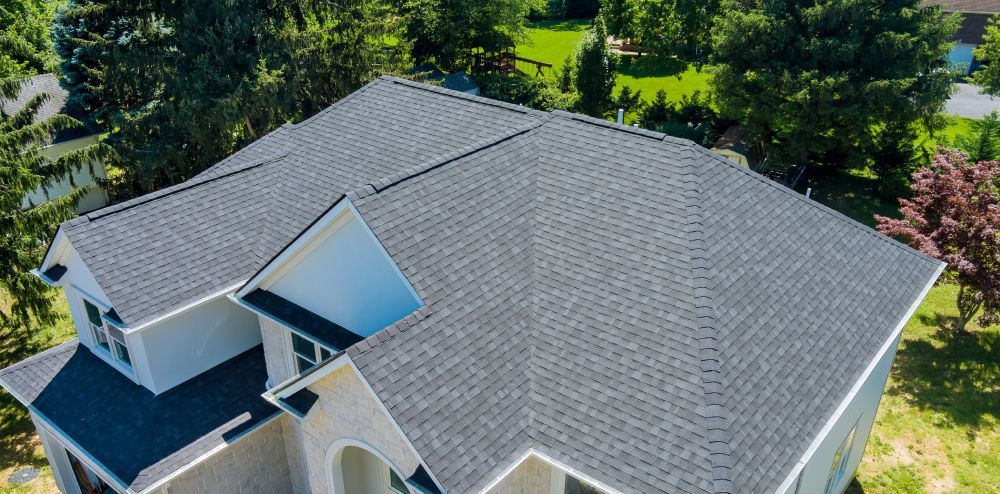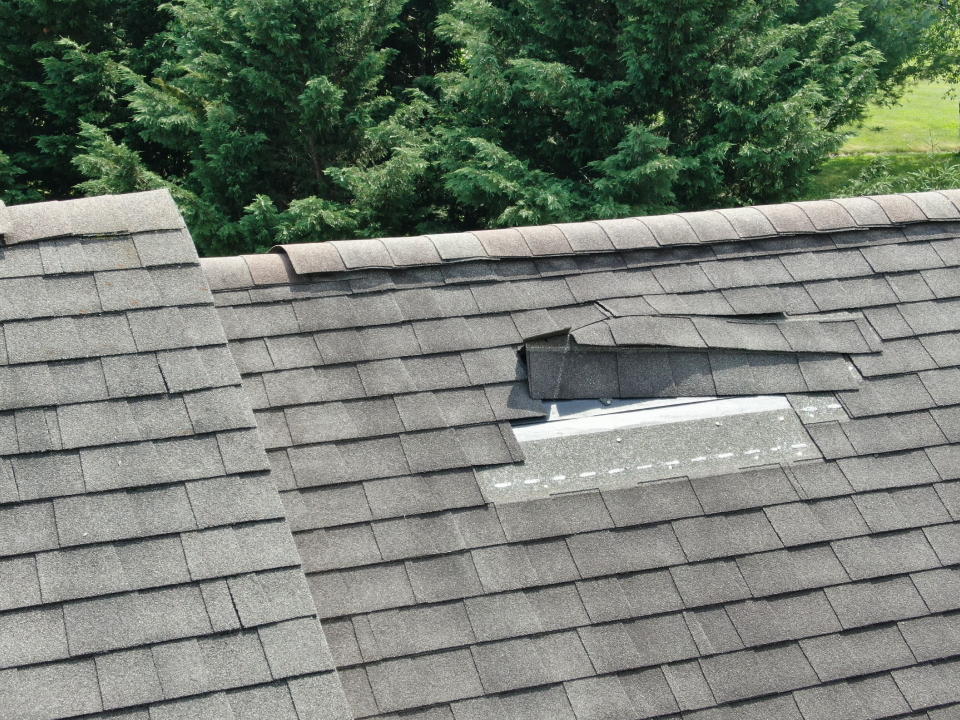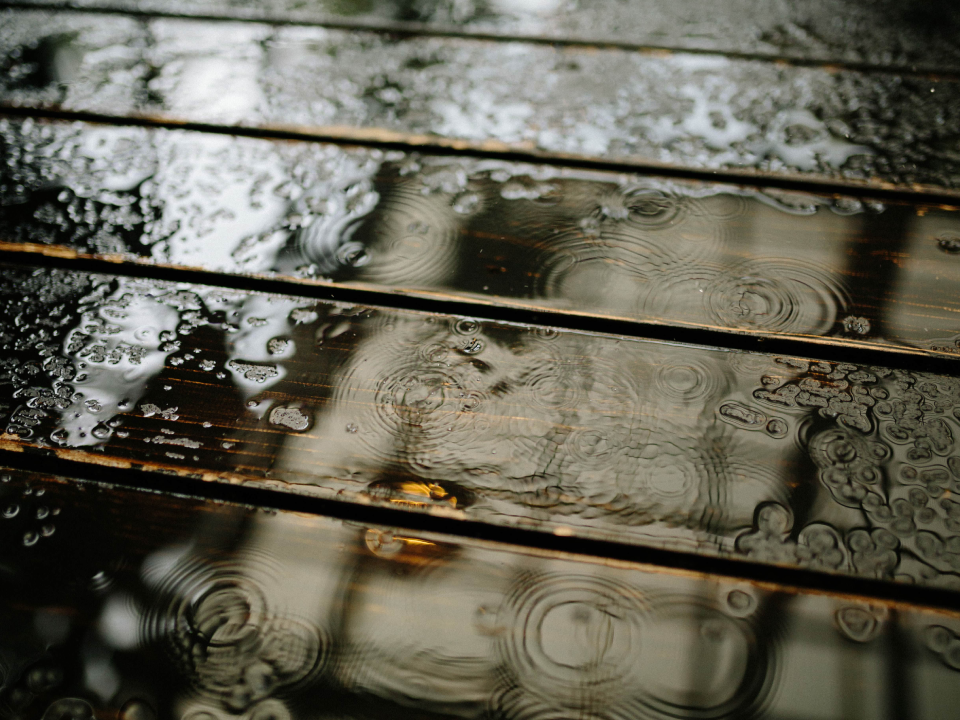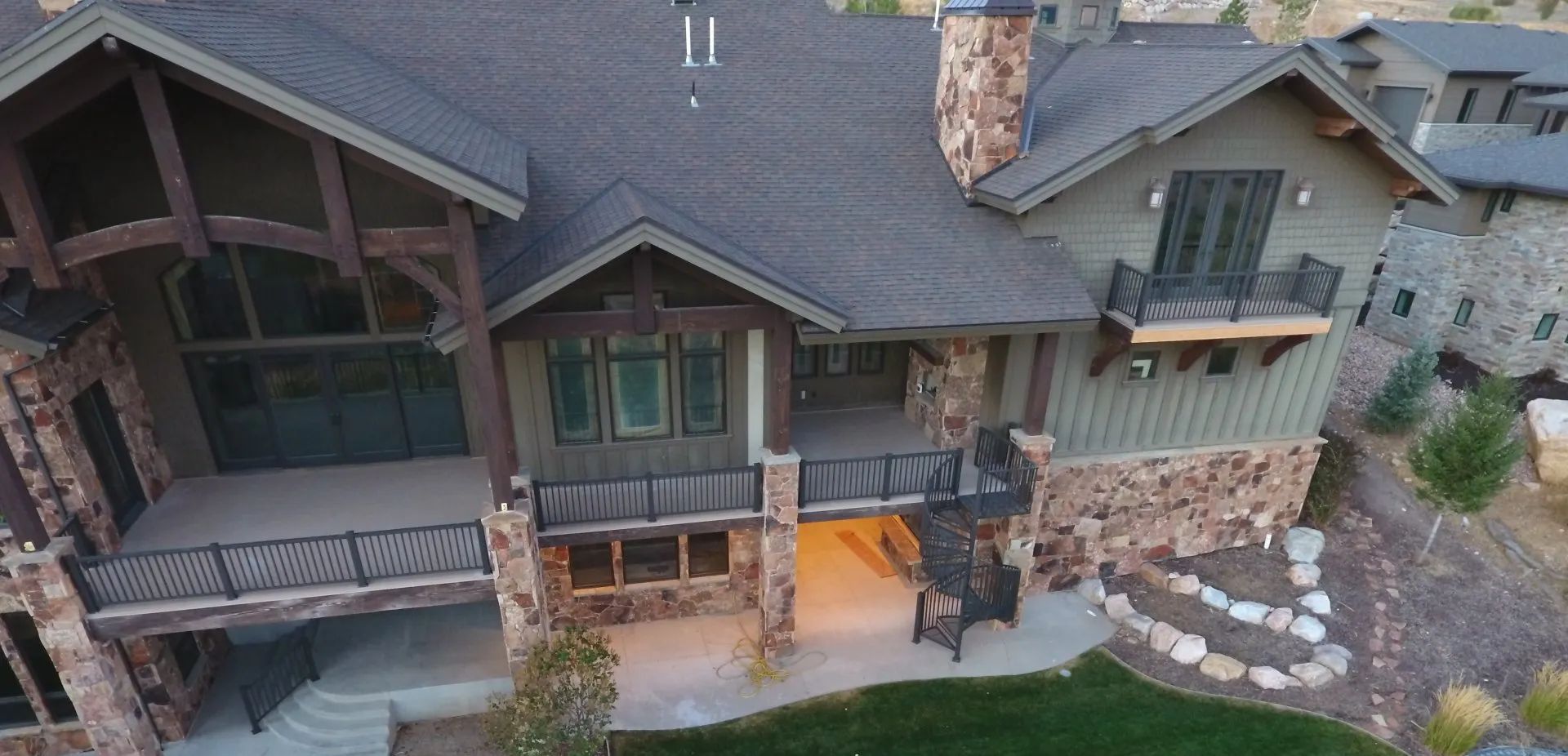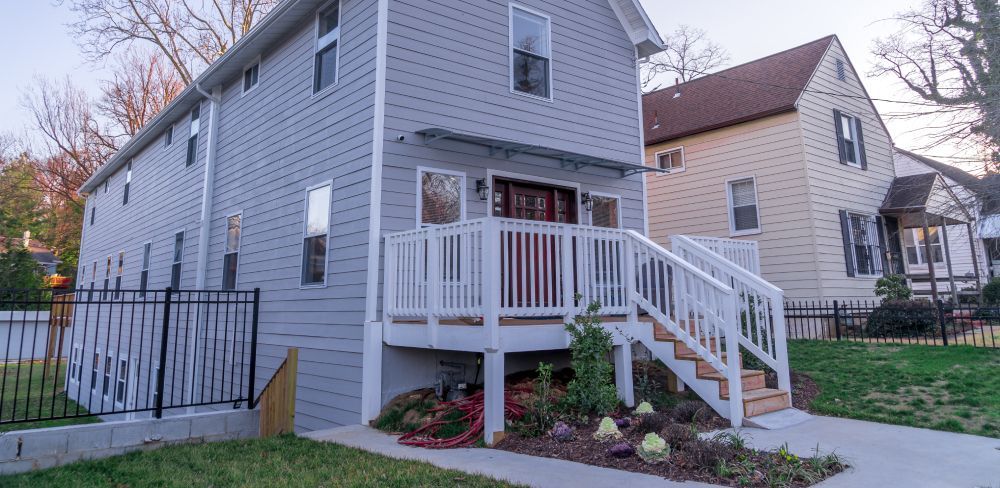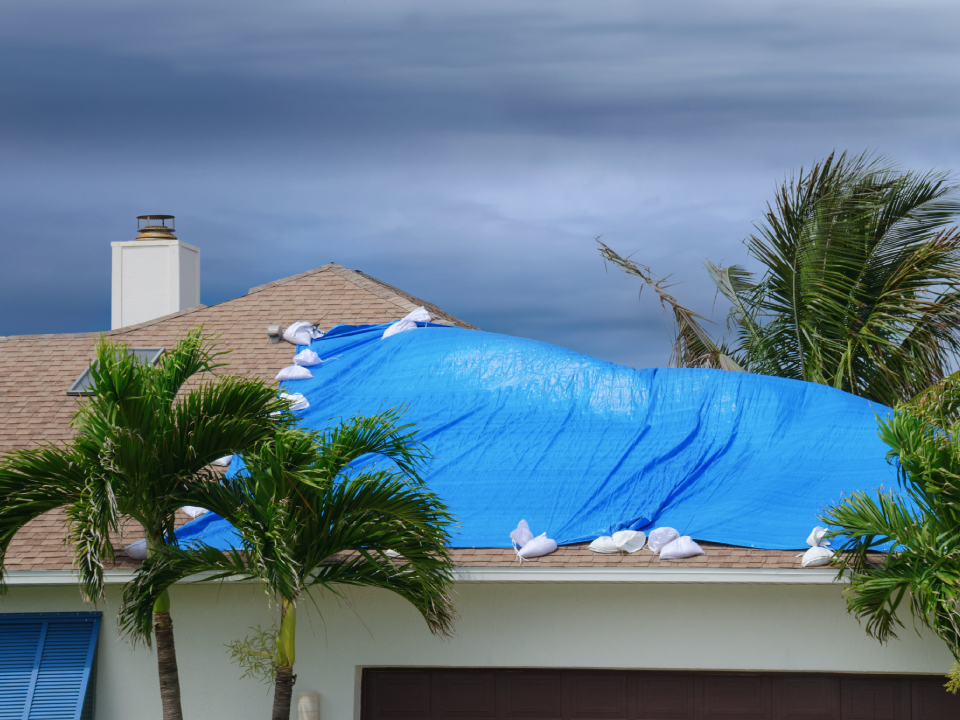801-544-5125
office@bobharveyroofing.com
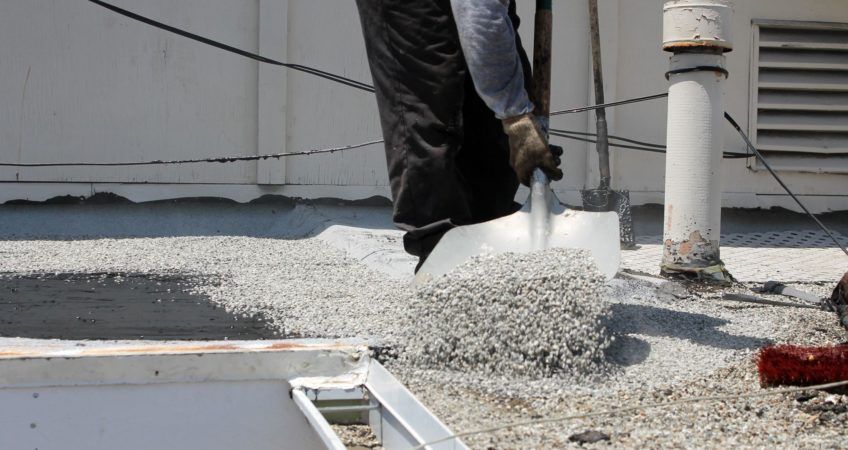
Ultimate Tar and Gravel Roof Guide 2024
Bob Harvey Roofing • Jan 01, 2024
Tar and Gravel roofs were a popular choice until recently because of their ability to keep homes warm in the winter. They are often featured on commercial buildings because they protect their underlying roofing materials, improving the installation’s longevity. Generally, tar and gravel roofs make for more evenly distributed roofing material weight.
Tar and Gravel roofs are made from layers of perforated felt or fiberglass material with asphalt bonding. To construct these roofs, the top of the roof has to be covered with hot asphalt, which is then paved with gravel. Unlike other roofing styles, tar and gravel roofs are flat, which means they require special repair and maintenance techniques.
Table of Contents:
- What is a Tar and Gravel Roof?
- Types of Gravel and Tarred Roofs
- How Long does a Tar and Gravel Roof Last?
- What are Common Tar and Gravel Roof Problems?
- Pros and Cons of Tar and Gravel Roofs
- Can you Repair a Tar and Gravel Roof?
- Tar and Gravel Roof Maintenance
- Alternatives to Tar and Gravel Roofs
- Tar and Gravel Roof Removal
- Get Residential Roofing and Roof Inspections
What is a Tar and Gravel Roof?
A tar and gravel roof, also known as a built up roof or a hot-mop roof, is made by layering multiple components to create a waterproof and weather-resistant barrier. The typical layers include:
Base Layer: The base layer consists of insulation boards or a vapor barrier that provides thermal insulation and protects the building from moisture.
Ply Sheets: Ply sheets, often made of fiberglass or organic felt, are then applied over the base layer. These sheets add strength and stability to the roof.
Bitumen (Tar) Layer: The next layer is the application of hot bitumen (a sticky, black, and viscous substance) over the ply sheets. Bitumen acts as an adhesive, bonding the layers together and creating a waterproof seal.
Gravel Surface: Finally, a layer of gravel or aggregate is embedded into the hot bitumen. The gravel helps protect the roof from UV rays, extreme temperatures, and physical damage. It also provides a fire-resistant barrier.
Types of Gravel and Tarred Roofs
There are two main types of built up roofs (BURs) or Tar and Gravel Roofing Systems. Ballast Roofing, which is larger gravel applied on top of a single-ply roofing system, and Modified Bitumen, which are a mix of asphalt and rubber with a layer of gravel on top.
How Long Does a Tar and Gravel Roof Last?
Tar and Gravel Roofs last between 20-25 years. Properly maintained roofs can maximize their life span, while neglected roofs may start leaking much earlier. The best thing you can do to make your roof last longer is to inspect it and repair problems as soon as you can.
What are Common Tar and Gravel Roof Problems?
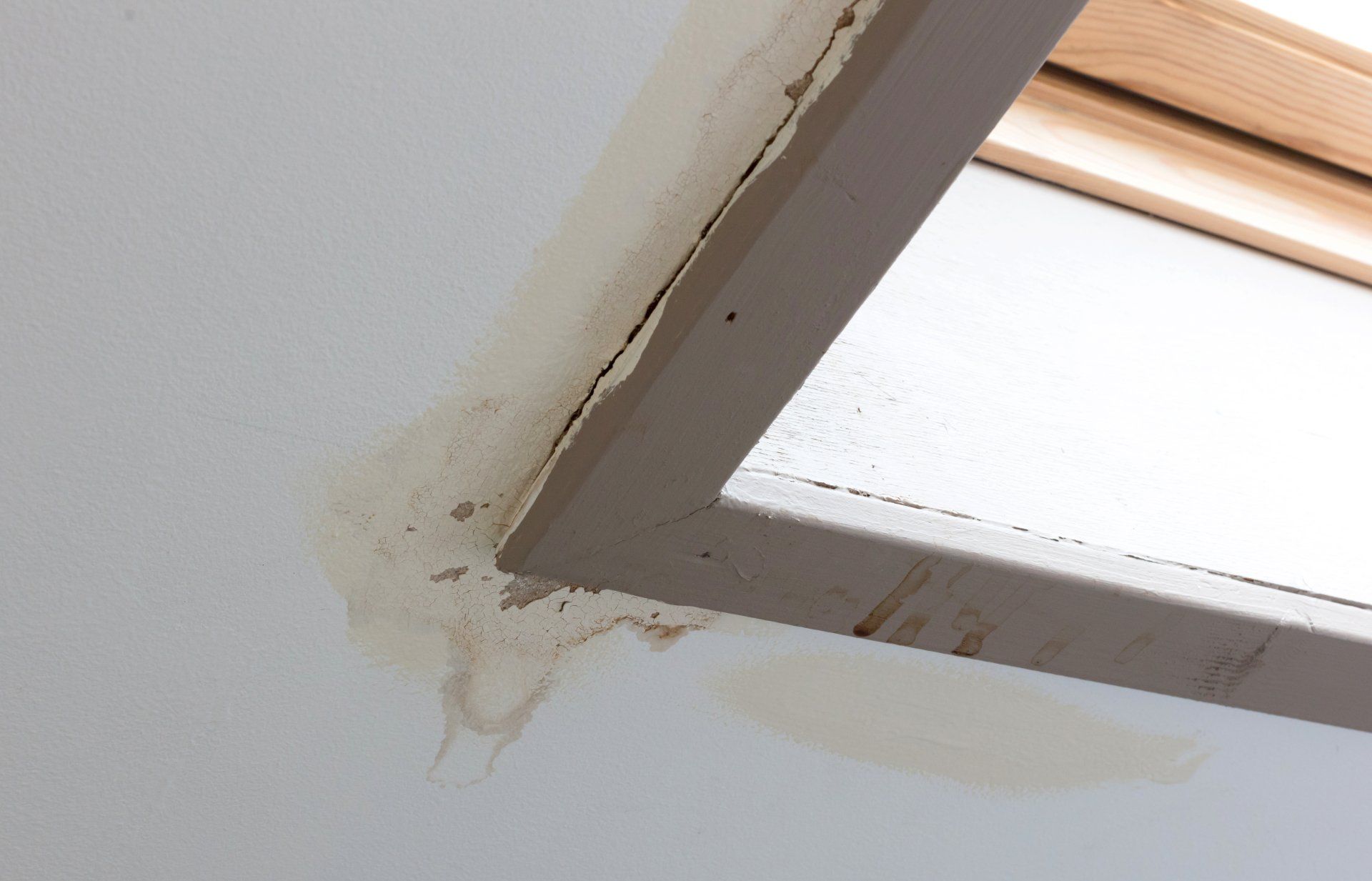
The most common tar and gravel roof problem is ponding. Ponding leads to leaks, which can be patched up but will weaken the roof’s entire structure. Typically, if more than a quarter of a gravel or tar roof is patched up, the entire roof has to be replaced.
Other common tar and gravel roof problems include:
- Exposed paper
- Cracks in the tar, especially around the roof penetrations like vents and pipes.
- Windblown gravel
- Hail Damage
- Membrane Damage from UV Exposure
Any of these problems could lead to leaking. When roofs leak, sanitary and health hazards may follow. The leaking moisture can infiltrate the underlying roof materials, run along walls and even come in contact with electrical outlets, which could cause a fire.
If you’re noting leaks in a property you’re looking to buy, make sure it’s looked over by a Utah building inspector, preferably one with expertise in bitumen roofing systems. They will inform you of whether the roofing membrane can be patched up or whether more long-term work will have to be performed.
What are the Pros and Cons of Tar and Gravel Roofing?
Tar and gravel roofs, also known as built-up roofs (BUR), offer several advantages and disadvantages that property owners should consider when choosing a roofing system. Understanding these pros and cons can help make an informed decision. Let's explore them:
Pros:
1.
Durability: Tar and gravel roofs are known for their durability and long lifespan. When properly installed and maintained, they can last for 20 to 30 years or more. The multiple layers and gravel surface provide protection against UV rays, extreme temperatures, and physical damage.
2.
Cost-Effective: Compared to some other roofing systems, tar and gravel roofs are relatively affordable to install. Additionally, their long lifespan reduces the need for frequent replacements, resulting in cost savings over time.
3.
Versatility: Tar and gravel roofs can be installed on both flat and low-slope roofs, making them suitable for a wide range of buildings. They can accommodate irregular roof shapes and provide a seamless appearance.
4.
Fire Resistance: The gravel layer on a tar and gravel roof acts as a fire-resistant barrier, which can help protect the building from fire hazards. This can be particularly advantageous in areas prone to wildfires or for buildings with specific fire safety requirements.
5.
Maintenance: Tar and gravel roofs require regular maintenance but are relatively straightforward to repair. Small cracks or blisters can be patched easily, and the gravel surface can be replenished if needed. Routine inspections and maintenance can help prevent major issues and extend the roof's lifespan.
Cons:
1.
Weight: Tar and gravel roofs can be heavy due to the multiple layers and the gravel surface. It is essential to ensure that the building's structure can support the added weight. In some cases, additional structural reinforcement may be necessary.
2.
Installation Complexity: Installing a tar and gravel roof requires specialized knowledge and experience. It involves the use of hot bitumen and precise layering techniques. Improper installation can lead to issues such as leaks or premature roof failure. Hiring a professional roofing contractor with expertise in tar and gravel systems is crucial.
3.
Limited Insulation: Tar and gravel roofs typically offer limited insulation compared to some other roofing systems. Additional insulation measures may be required to improve energy efficiency and thermal performance.
4.
Maintenance Challenges: While maintenance is necessary for tar and gravel roofs, the gravel surface can make it challenging to locate and repair leaks or damage. The gravel may need to be temporarily removed to access and repair the underlying layers.
5.
Messy Roofing Process: The installation or repair of a tar and gravel roof can be messy due to the use of hot bitumen and the application of gravel. This may require extra precautions to protect the surrounding property and landscaping during the roofing process.
Considering these pros and cons, property owners can evaluate whether a tar and gravel roof aligns with their specific needs, budget, and building requirements. It is advisable to consult with a professional roofing contractor to assess the suitability of this roofing system for a particular project.
Can you Repair a Tar and Gravel Roof?
Yes! Most issues with tar and gravel roofs can be repaired to extend the life of the roof.
However, the repair your roof will need will depend on the issue it faces; therefore, it is always good to consult a roofing contractors in Utah if you aren’t certain of the underlying problem. If you’re dealing with an exposed intermat, for instance, the asphalt that holds the gravel must have worn off, making the fiberglass intermat visible. The intermat is likely to seep in water, which can cause leakage problems. The membrane can be sealed by recoating the surface.
Membrane damage from UV ray exposure is also a frequent gravel or tar roof problem. The asphalt absorbs and conducts the heat, which can weaken the membrane, and the thermal shock of changing temperatures from hot to cold can crack it.
If the damage is substantial, the entire membrane may need to be repaired. If you’re using asphalt on a metal roof foundation, seams and cracks can occur in the summer as the metal expands in the heat. This roof repair can be performed by an expert crew, who will advise you on the longevity of the installation based on your environment.
Tar and Gravel Roof Maintenance Options

Proper maintenance is essential to ensure the longevity and performance of a tar and gravel roof. By implementing a regular maintenance routine, property owners can identify and address potential issues before they escalate into more significant problems. Here are some key steps to effectively maintain a tar and gravel roof:
1. Regular Inspections: Conduct routine inspections of the tar and gravel roof to identify any signs of damage, wear, or deterioration. Inspect the surface, seams, flashings, and drainage systems. Look for cracks, blisters, loose gravel, or areas where the bitumen may be exposed.
2. Clear Debris: Regularly remove debris, such as leaves, branches, and dirt, from the gravel surface. Debris can accumulate and block drainage paths, leading to water pooling and potential roof damage.
3. Address Ponding Water: Pay attention to areas where water may accumulate or pond on the roof's surface. Prolonged ponding can weaken the roofing materials and lead to leaks. Ensure proper drainage by clearing any blockages in gutters, downspouts, and scuppers.
4. Repair Cracks and Blisters: Promptly repair any cracks, blisters, or punctures in the roof's surface to prevent water infiltration. Clean the damaged area, apply a suitable patching material or sealant, and ensure proper adhesion to the existing roof layers.
5. Maintain Flashings and Edge Details: Inspect and maintain flashings and edge details, such as those around chimneys, vents, skylights, and parapet walls. Ensure they are properly sealed and free from gaps or damage that could allow water penetration.
6. Trim Vegetation: Trim any overhanging tree branches near the roof to prevent them from rubbing against the surface, damaging the roof membrane, or blocking drainage paths. Ensure that vegetation does not accumulate on the roof.
7. Professional Maintenance: Consider hiring a professional roofing contractor experienced in tar and gravel roofs for regular maintenance inspections and repairs. They have the expertise to identify potential issues and perform necessary repairs or maintenance tasks effectively. Remember, safety is paramount when performing roof maintenance. If you are uncomfortable or unsure about any maintenance tasks, it is best to consult with a professional roofing contractor.
8. Document Maintenance History: Keep a record of all maintenance activities performed on the tar and gravel roof. This documentation helps track the roof's condition, identify recurring issues, and provide valuable information for future inspections or repairs.
9. Upgrade or replace trouble spots: High-quality flashing and compression drains can make your entire roofing installation more durable. To make your roof last longer, you can also have it strengthened or built up by layering the roof with more fiberglass or foam. This will improve its insulating properties.
10.
Consider a Coating: You can also opt for the application of an acrylic or elastomeric coating, which will make your installation more resistant to harsh weather conditions. You can also switch to a thermoplastic membrane, which will prevent moisture from infiltrating the layers between the asphalt and the roof base.
Alternatives to Tar and Gravel Roofs
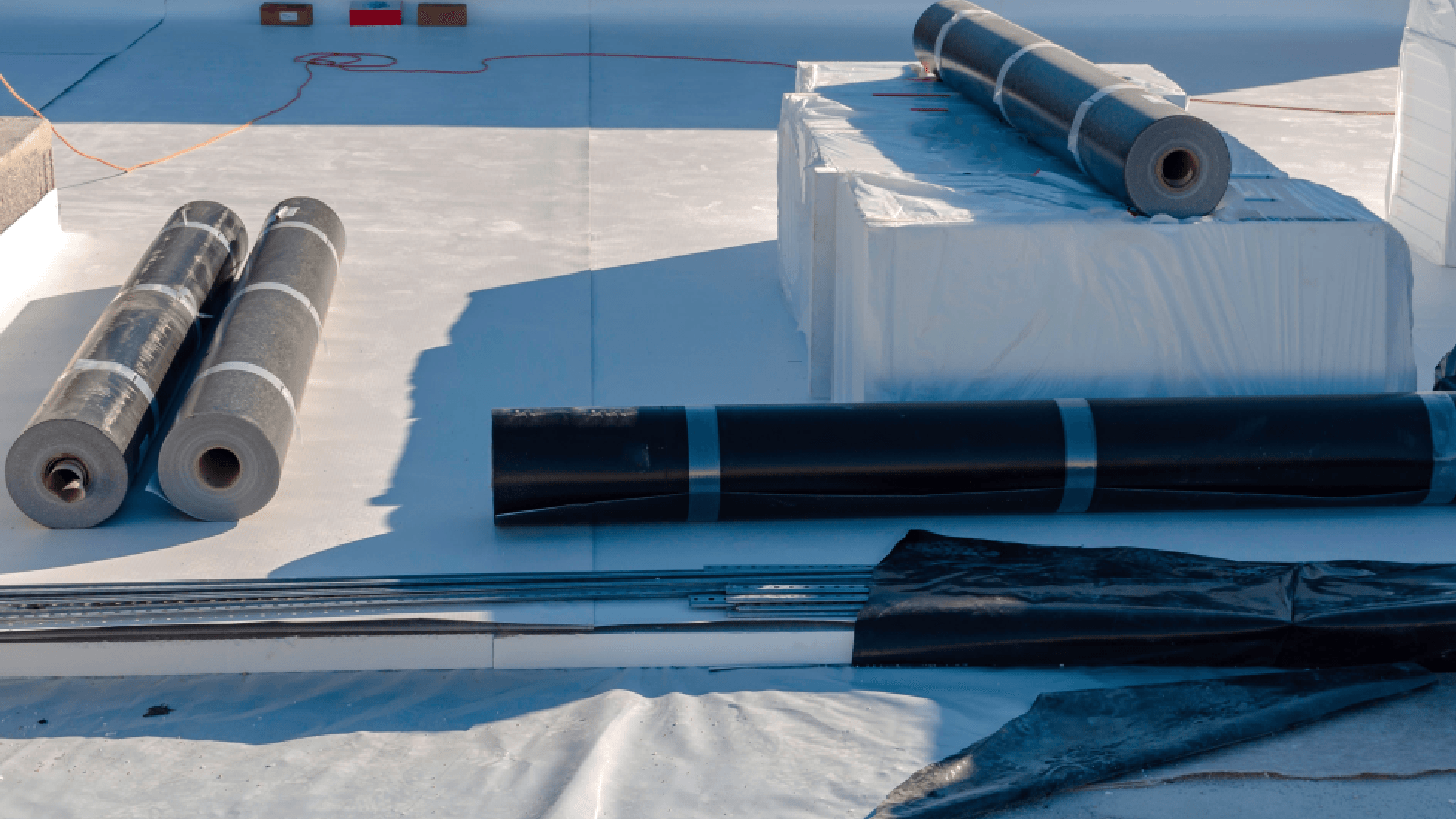
While tar and gravel roofs have their advantages, there are several alternative roofing systems that property owners can consider. Here are three popular alternatives: TPO roofing, metal roofing, and Duro-Last roofing.
1. TPO Roofing (Thermoplastic Olefin):
TPO roofing is a single-ply roofing membrane made of a blend of rubber and plastic. It has gained popularity in recent years due to its energy efficiency, durability, and ease of installation. Some key benefits of TPO roofing include:
- Energy Efficiency: TPO roofs are highly reflective, helping to reduce heat absorption and lower cooling costs. They can contribute to energy savings and provide a more comfortable indoor environment.
- Durability: TPO roofs are resistant to UV rays, ozone, and chemical exposure. They have excellent weathering capabilities and can withstand extreme temperature fluctuations without significant degradation.
- Installation: TPO roofing is relatively lightweight and easy to install, reducing labor costs and installation time. It is available in various widths and can be mechanically fastened, fully adhered, or ballasted during installation.
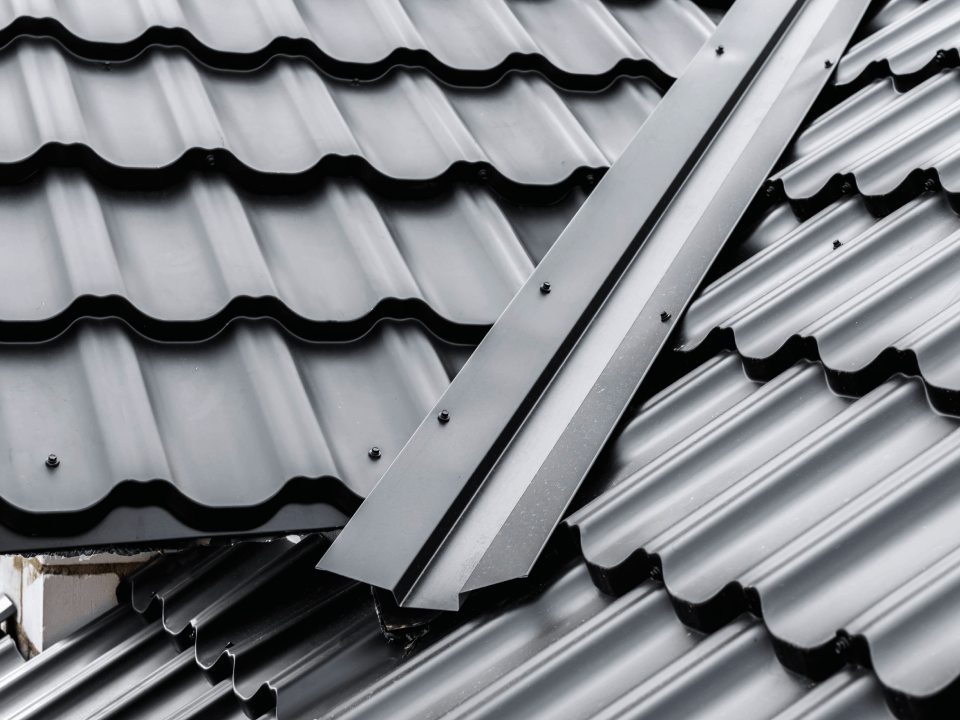
2. Metal Roofing:
Metal roofing is a versatile and durable option that offers a unique aesthetic appeal. It is available in various materials, including steel, aluminum, and copper. Metal roofing has several advantages:
- Longevity: Metal roofs are known for their exceptional longevity, often lasting 50 years or more with proper maintenance. They are resistant to fire, rot, and insect damage.
- Energy Efficiency: Metal roofs can reflect solar heat, reducing cooling costs in hot climates. They can also be installed with insulation to enhance energy efficiency.
- Versatility: Metal roofs come in a wide range of styles, colors, and profiles, allowing for customization to match the architectural style of the building. They can be installed on both steep-slope and low-slope roofs.
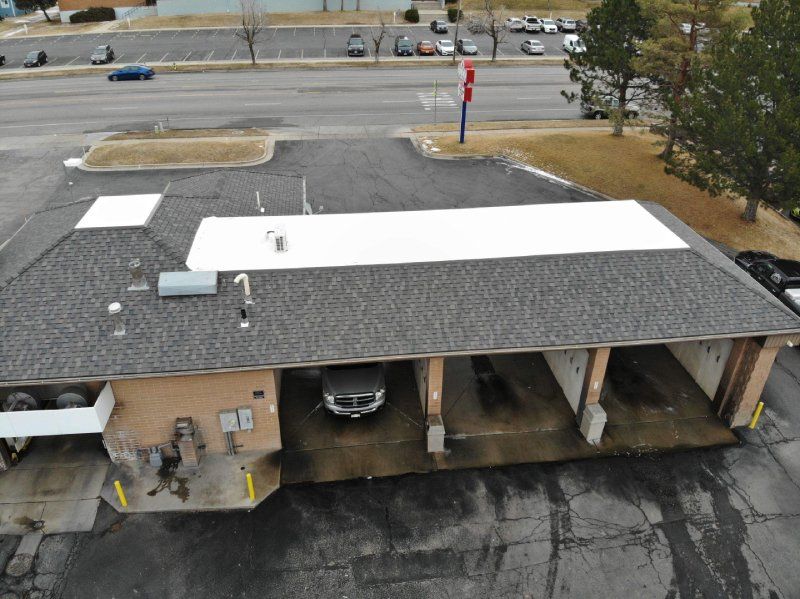
3. Duro-Last Roofing:
Duro-Last roofing is a single-ply, thermoplastic roofing membrane that is prefabricated in a factory-controlled environment. It offers several advantages for commercial and industrial buildings:
- Custom Fabrication: Duro-Last roofs are custom fabricated to fit the specific dimensions of the building, reducing on-site labor and installation time. This precision manufacturing ensures a high-quality and watertight roofing system.
- Durability: Duro-Last roofs are highly resistant to punctures, chemicals, and UV radiation. They have a long lifespan and require minimal maintenance.
- Energy Efficiency: Duro-Last roofs have high reflectivity and emissivity, reducing heat absorption and lowering cooling costs. They can contribute to LEED certification and energy savings.
- Seamless Installation: Duro-Last roofs are installed using heat-welded seams, creating a seamless and watertight barrier. This eliminates the risk of leaks and enhances the overall performance of the roofing system.
When choosing an alternative to tar and gravel roofs, it is essential to consider factors such as the building's structural requirements, climate conditions, budget, and aesthetic preferences. Consulting with a professional roofing contractor can help determine the most suitable roofing system for a specific project.
Get Residential Roofing & Roof Inspections in Utah Today
Tar and Gravel roofs are desirable roofing options because, when installed properly, they can offer a variety of thermal and cost-efficiency advantages with sufficient insulation layers. There are plenty of repair options in the short run, but a damaged roof membrane calls for a replacement. Contact us today for more information on your Utah residential roofing options.
The post Tar and Gravel Roof Repair – Everything You Should Know appeared first on Bob Harvey Roofing .
ABOUT US
Bob Harvey has been in business for over 30 years and has been providing exceptional service throughout Northern UT and surrounding areas.
Content, including images, displayed on this website is protected by copyright laws. Downloading, republication, retransmission or reproduction of content on this website is strictly prohibited.
Locations We Serve
List of Services
-
Centerville
-
Clearfield
-
Clinton
-
Farmington
-
Fruit Heights
-
Kaysville
-
Layton
-
North Salt Lake
-
South Weber
-
Sunset
-
Syracuse
-
West Bountiful
-
Farr West
-
Harrisville
-
Huntsville
-
Hooper
-
Marriott-Slaterville
-
North Ogden
-
Ogden
-
Plain City
-
Pleasant View
-
Riverdale
-
Roy
-
South Ogden
-
Uintah
-
Washington Terrace
-
West Haven
-
Eden
-
Liberty
-
Nordic Valley
-
Reese
-
Taylor
-
Warren
-
West Weber
-
Enterprise
-
Morgan
-
Mountain Green
-
Como Springs
-
Croydon
-
Devils Slide
-
Littleton
-
Milton
-
Peterson
-
Porterville
-
Richville
-
Stoddard
-
Taggarts
-
Whites Crossing
